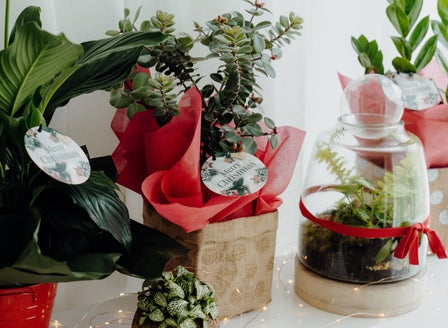Hippeastrums produce large vibrant flowers on long stems in Summer and will make a statement and create interest in garden beds or in pots, indoors or out. Their vibrant flowers range in colour from red, pink, white, or variegated versions.
Planting Calendar
Prepare
Position
Hippeastrums can grow either in the ground or in pots where they can be taken indoors to enjoy the flowers. They prefer to be grown in full sun, but must have a free draining soil.
Soil
When planted into the ground, Hippeastrum likes a free draining soil that is rich in organic matter. To improve the organic content in your soil, break up the soil and add Kings Compost and Kings Sheep Pellets then mix together well. When growing in containers, plant into Kings Potting mix.
Plant
Plant with the pointy part of the bulb facing upwards so that the neck of the bulb sits at the surface of the soil. Firm the soil gently around the bulb then water well with Organic Garden Booster.
Care
Watering
Water sparingly as too much water may rot the bulb. Provide just enough water to dampen the soil. Never allow bulbs planted in pots to sit in water.
Feeding
Feed with Kings Bulb Food when the sprout starts to grow, and once again when the flower starts to die back. For strong roots and healthy bulbs liquid feed every 2 weeks with Aquaticus Garden Booster.
Protecting
When grown outside protect from slugs and snails with Quash.
General Care
When the flower has finished, remove the old flower stem as close as possible to the base of the bulb. Let everything die back, this will enable the plant to take all the nutrient from the leaves back into the bulb. Place the pot, in a cool, dry place for 3 months. Do not feed or water at this point.
Beginner Tip
As the first flower stems lengthen, rotate the pot a half a turn every day to help stop the stem growing towards the strongest source of light
Expert Tip
It is essential for the bulbs to go through a 10 weeks period of neglect (causing stress on the bulb) to encourage flowering the next season. This can be achieved by not watering from May to the end of July, when grown indoors where the plant will retain its leaves. Or place outdoors in a sheltered, cool and dry position over winter but ensure you protect from snails. The bulb will most likely lose all its leaves.
Tip
When using sprays, chemicals or fertilisers always read the label and follow the instructions. Apply sprays in the evening to avoid harming beneficial insects.
Frequently Asked Questions
Can I keep hippeastrums inside?
Yes you can, as long as they are in a north facing window, or have already sprouted their flower bud(s), you can bring them inside in a pot to enjoy over the Christmas/ summer holiday period.
How often should I water Hippeastrum?
Water sparingly as too much water may rot the bulb. Provide just enough water to dampen the soil. Never allow bulbs planted in pots to sit in water.
When should I plant Hippeastrum bulbs?
Plant in late summer to early autumn for spring blooms.
How do I care for Hippeastrum after flowering?
Cut back spent flowers, reduce watering, and allow foliage to die back naturally.
Are Hippeastrum prone to any pests or diseases?
Watch for spider mites, aphids, and fungal diseases; treat promptly if detected.
